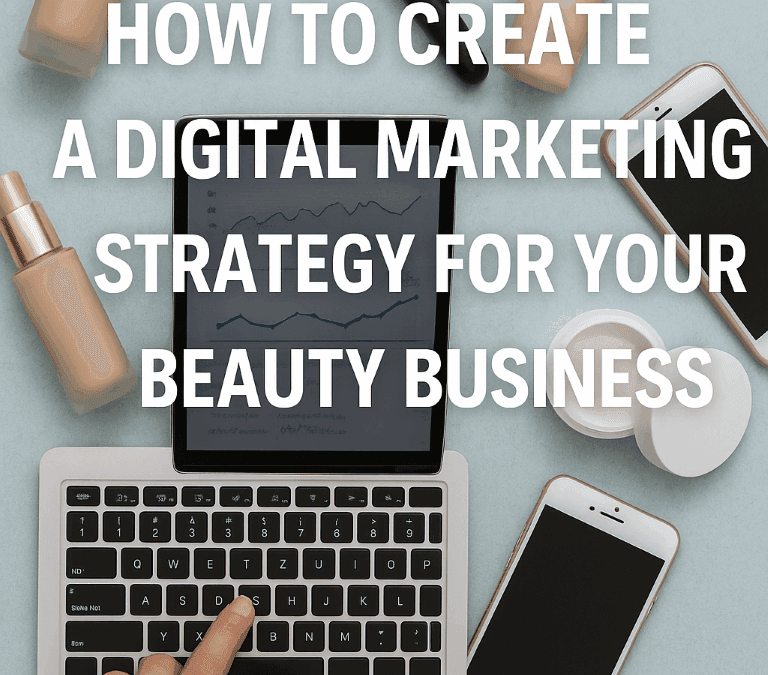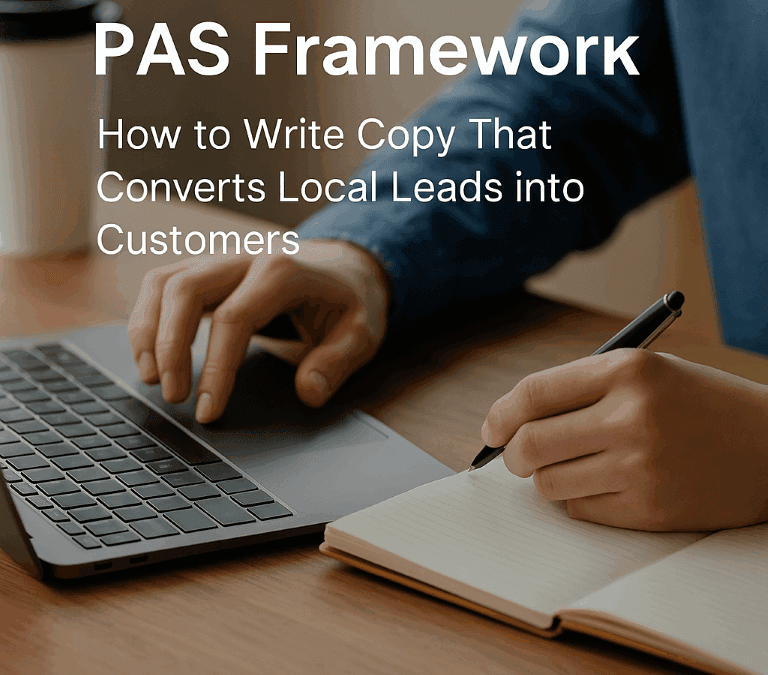In this week’s instalment of our Ultimate Marketing Strategy series, we’re looking at everything you need to know about competitor research. We’ve delved into drafting your Executive Summary (Part 1), Market Research (Part 2) and Target Market (Part 3) — now, it’s understanding who your competitors are, their market share, what they are doing, their marketing strategy, and their unique selling points (USPs).
All so you can carve out your very own unique and tipped-for-success place in the market.
Marketing competitor research is a vital part of your own marketing strategy. Carrying out comprehensive research on your competitors gives you the know-how on how to run your business and the direction it’s taking. Yes, it’s time-consuming and takes a lot of research, but the rewards are definitely worth it. The hardest things are those worth doing, right?
Equipped with the knowledge of who your competitors are, helps you to spot potentially missed opportunities, implement improvements to overcome identified weaknesses, become aware of blind spots, and ultimately — place you in front of your consumers and become a brand all your target consumers want to engage with.
Competitor Research
The competitive landscape is a challenge. It’s full of other brands. As hungry and eager to launch, showcase their experience, expertise and uniqueness.
It’s all too easy to skip or skim over this part of your marketing strategy, full of hope and optimism that your product or service is the best on the market. How devastating then, to find out that your competitors have a similar, or nightmare-scenario, are about to launch something deemed even better and sought-after by your target market? Let’s get that thought out of our minds. This is where competitor research comes in to avoid this very scenario.
A foundation based on facts provides clarity and direction when it comes to estimating market position, sales and profitability, and how marketing will help you get there — is crucial.
It’s a pretty safe bet that your competitors will be conducting research of the space you sit in to gain their own competitor advantage. So it’s an invaluable part of your marketing strategy research and creation. Looking into what they’re up to and comparing it to how you’re entering, sitting and operating in the market is crucial. Remove the guesswork and rely on actual data-driven consumer insights to guide your marketing decisions.
Comprehensive competitor research helps you gain a competitive advantage, to get an edge over what they’re doing. To stand out in the marketplace.
What is Competitor Research?
The competitor research part of your marketing strategy is where you identify key competitors and research their products, services, sales, profitability and marketing strategies. You’ll learn what business strategies it has and how the entire business works. What makes it so popular and loved by your shared consumers?
It’s a highly strategic area of your research that focuses on gathering and analysing your collected information and data on your rival businesses.
Your competitor research can uncover a complete in-depth look at your competitors’ businesses. You can then use this information to find gaps in the marketplace, identify market trends, launch new products and services, and market and sell with improved results.
New 2020 data from US research firm Crayon on the State of Competitive Intelligence found 41% of business professionals “strongly agree” that competitive intelligence is critical to their company’s success.
An ongoing process, competitor research keeps you on top of the trends, actions and points of difference amongst your competitors, as well as new rivals, preparing your business for the long term.
What are the Benefits of Researching your Competitors?
We all know they’re there. We just may not know who they are. What they do. Their marketing strategy. Nor their USPs. We want to, though. We need to find out. It’s critical for the success and survival of our business. New software and technology are all around us, making it easier than ever before to compile rich insights on our closest competitors. And stay one step ahead of them.
Let’s think about how we may choose a business to provide us with a product or service we’re after. Comparison, comparison, comparison. We’ll find the type of product or service we need and mentally note:
- Does it solve the problem I’ve got?
- What customer service does this company offer?
- What’s the pricing?
- How do these answers differ between company A, B and C?
- Ultimately, am I getting a good deal?
A little word on pricing. It comes into our decision making, for sure. It’s not all about a pricing war (we’re covering pricing strategy in Part 6, our Pricing and Positioning blog). It’s about answering: “Which product or service do I trust and think would solve my problem best?”
If we consider competitor research as key to influencing our decisions, then as competitors, we want to know what we’re facing. It’s like turning up to run the 800m at the Olympics and not knowing who you’re competing against. It’s gonna be a much tougher race!
So, here are some of the top benefits of competitor research. It enables you to:
- Know your market
- Identify your competitors
- Understand what they’re offering
- Improve how you target your ideal customers
- Find new customers
- Gauge supplier relationships
- Determine the potential of your market
- Identify strengths and weaknesses
- Uncover opportunities and threats
- Learn how external factors such as economic or regulatory influence your marketplace
- See the gaps in your market
- Propel R&D through innovative solutions
- Suss out how your competitors price their products/services
- Support strategic planning
- Validate or evolve your Unique Value Proposition
- Prioritise product/service launches or development by centring your efforts on elements customers really value and base their decision on
- Improve your product/service by leveraging competitors’ weaknesses that customers know and complain about
- Find metric benchmarks and these as a measure for your growth
- Unearth market areas that competitors aren’t in (or not fully!)
- Reduce the risk of failure
- Facilitate revenue projections
- Stay ahead of the competition!
Tips for Researching your Competitors
Get to the real crux of your competition quicker and more effectively with these need-to-know tips.
1. Pick the Most Relevant Competitors: Who Are They?
Before we start on the actual competitor research, we need to make sure we’re picking relevant and important competitors. To do this, ask: “If my business didn’t exist, where would my target market go?”.
Everyone has competitors, sure, but don’t worry if that question doesn’t throw up any immediate answers. You may be innovating a patent-worthy product or cutting-edge service that changes the way we do things. In these cases, think about how your product or service solves a problem. And who currently is offering a solution.
A handy spreadsheet is helpful here. This is a working document that gets updated as and when new competitors enter your market (or leaves), new product/service crops up, or change in the market segment, conditions or sales. You may like to create two spreadsheets: one for key competitors established in the marketplace and one for emerging competitors.
Here, start your research with key details, including:
- Name
- Location (if you’re operating within a specific area)
- Website URL
- Elevator pitch (A short description of who the company is)
- Mission, Vision and Values (If they have these, they’re usually detailed on the website in the About Us page/section)
- Products/services
- Pricing
- Strengths
- Weaknesses
- Unique Selling Points (What sets them apart from the competition?)
2. Find the Info: Where to Go For Research
So, we know we need competitor research. But where to begin is often a massive obstacle. A go-to starting point is the search engine of your choice. Search the company name, and you’re away. Soon you’ll have a whole list of direct competitors to work with, which will help you to then pivot and identify both secondary and tertiary competitors.
As well as researching organic web search results, check out search engine ads too. These will help by identifying competitors that have based their paid advertising campaigns on those search terms that you’re using to find them.
As well as secret shopping (read tip #3), check out analytic content tools such as BuzzSumo to research relevant business and market terms to see the most shared content on these popular topics. Source physical and digital trade publications for brand mentions, along with social media and forums.
Talk to your prospective and existing customers too. Use surveys, questionnaires and other research tools to collect information.
And if this all seems like simply too much, there’s always help on hand from external partners who can produce competitor research as part of a complete marketing strategy for you.
3. Suss Them Out: What Do They Offer?
Carrying out shopping yourself, as in your a consumer can be a great way of finding out your competitors offer in a realistic setting. Often called secret shopping, it provides actual detail and findings on whether customers are able to know and deliver on their customer promises, rather than simply saying it.
Although a tricky one as it does feel kinda sneaky. Okay, very sneaky. It’s likely that your competitors will have similar information on you and so it’s seen as an unwritten rule for many, that you will engage in secret shopping to uncover their real offers and delivery.
You could shop for the items yourself (hypothetically gathering quotes, proposals or entering their store). Alternatively, you could ask a team member to do this and report back to you.
If you’re feeling uneasy, get the lowdown by asking the people that may have tried them before, or got an actual quote or proposal: Your customers. Either in an informal or formal setting, ask them where they have looked for or bought similar products/services and their overall experience.
4. Measuring and Metrics: What Will You Choose?
Okay, so you know who you are measuring, now it’s all about the metrics we’ll use to quantitatively and qualitatively delve into their business in more depth.
Metrics you use may include:
- What are their sales figures?
- What is their turnover versus profitability?
- What is their branding? What messages do they convey? What is their visual identity?
- What are their products and/or services?
- What is their pricing and associated strategy, i.e. deals and promotions?
- What promotional strategies do they offer and how long do they run for?
- What marketing activities do they engage in?
- What market segments do they operate in?
- What geographic areas do they operate in?
- How many team members do they have?
- What is their staff turnover rate?
5. Monitor Your Competitors on an Ongoing Basis: What’s Changed?
Regularly revisit and explore your competitor landscape again for evolving information and activities. About every three months is a good rule of thumb.
Look at:
- Has their branding, including their visual identity and/or messaging changed?
- Do they have any new products or services?
- Have they changed their pricing?
- Do they have any promotions? Have these changed at all?
- Do they have any new marketing strategies?
- Are they operating in new markets?
- Are they operating in new geographic areas?
- Has their team expanded or diversified?
- Have they seen any drastic changes in their sales (either good or bad)?
And there you have it. So, now let’s get on to actual researching and writing your competitor research part of your marketing strategy with our step-by-step guide.
Step-by-Step Guide to Researching Your Competitors
Here’s the full lowdown on what to research when it comes to your competitors:
1. Who are your Competitors?
Narrowing down your customers is the important first step. And there isn’t just one type of competitor that you need to look out for. There are three: primary, secondary and tertiary. Here’s why there are three and why they’re equally crucial to research:
- Primary competitors (direct) are the businesses that sell the same products/services as you. If geography plays a part in your business, it is also those that offer these in the same geographical market. Ultimately, direct competitors are targeting the same audience in the same area as you, and therefore may be close substitutes.
- Secondary competitors (indirect) are businesses who do not offer the same or similar products/services to you in the same geographical area. These indirect competitors offer a different need or target a different audience. However, they can answer similar consumer queries, problems and pain points.
- Tertiary competitors are those businesses that sell a product/service that has some similarity to you but isn’t a real competition. You may be wondering why you need to know information about these? But, tertiary competitors offer important potential as information as these businesses may become direct or indirect competitors if they change their business model.
2. Company Overview
Gather basic information to provide an initial insight into your competitors. This information includes when the company was set up, the CEO’s names and key people, location, staff numbers and the marketplace it operates in. Resources like LinkedIn, CrunchBase, Glassdoor and Indeed can help you identify these.
3. Funding
Have your competitors received funding from investors? If so, armed with this information, along with how much they received, when they were given a cash injection, are really insightful. And especially useful for forward-planning if you’re looking to raise capital. Also, if growing and successful competitors didn’t receive funding, then investors may be even more eager to snap up the opportunity to invest in yours.
4. Products/Services
Understanding the range of products and/or services, their features and benefits and distribution plans, is imperative. As well as is the perks and promotions that your competitors make. These can make all the difference! Check through their website to see if they offer ‘freebies’ such as samples, content, tools and trials. Or whether there are any partnership programmes available for customers.
5. Pricing
Associated pricing and where this positions the competitor brands in the market, is vital.
By analysing their pricing, we can conduct A/B (split) testing to try out which package is preferred by customers, whether a monthly or annual subscription is chosen, and whether offering customers a range of prices for them to select based on what they can afford, can transform the success of your pricing strategy. In this part of your competitor research, ask:
- Does it have an affordable plan for startup entrepreneurs?
- Is there a segment of the market that your competitor does not reach?
- How does your competitor’s pricing indicate where they sit within the marketplace (low-cost or high-cost option)?
6. Unique Value Proposition
What do your competitors offer that gives them an edge? What do customers say about them? That influence customers’ buying decisions? These all give you great knowledge as to what their unique value proposition is, notably referred to as Unique Selling Points (USPs).
Difficult to emulate, these may range from publishing industry books, utilising patented technology or having a prestigious CEO. It’s now time to get creative, brainstorm and carve out your own USPs. See Part 5: Unique Selling Points (USP) to do just this.
7. SWOT Analysis
Knowing your competitors’ strengths, weaknesses and the level of threat they pose to your business shapes your own marketing strategy. Coupled with the wider opportunities and threats of the marketplace will give you a broad look at your overall business, sales and marketing.
By conducting a SWOT analysis, you can look at your business from a customer’s perspective and your competitors’ point of views.
To compare yourself with competitors, asks questions such as:
- What does your competitor do really well? This could be their content marketing, their products/services, their customer service, their freebies or their social media.
- What advantage/s does your competitors have over you (at the moment!)?
- What are your competitors’s biggest weaknesses?
- What opportunities has your competitor found nad embraced?
- What areas of the market do your competitors consider threats?
And then, one final question: How can your brand use this information to surpass your competition?
8. Innovation and technology
What are your competitor’s brands built on? Consider their website content management systems (CMS), custom relationship management (CRM) tool, analytics systems, email management services, social media platforms, and A/B testing tools.
Knowing the level of research and development within your competitors’ businesses (or that they have access too through outsourcing) indicates the level of investment in innovation, you need to compete.
9. Brand Awareness
How well do your customers know you? Do they know your brand even exists? What do they think of you? What’s their experience of you? These are all questions that can be asked by social listening tools such as Mention or Awario.
The market share of your competitors is a hard metric to measure. Enter share of voice, which is the volume of mentions your competitors receive on social media and throughout the web. Sentiment is also one to measure as it provides you with a hard-to-otherwise-gauge measure of how customers view their brand based on their experience, the experience of friends of families, or wider word of mouth from the web and media. You’ll also gather info on what their customers love and loathe about their products or services.
What are your competitors talking about? Do they have a range of go-to topics that their prospective and existing customers love to engage with?
A social listening dashboard will give you a whole load of data to fill in the gaps of other sections of your marketing strategy, namely their USPs, messaging and marketing plan.
8. Marketing
This is a biggie. For good reason, though. It’s worth it! When analysing your competitors’ marketing efforts, head to their website first. Check out:
- What are they doing in terms of content?
- Do they have a blog?
- Do they have case studies and FAQs?
- Downloadable whitepapers and ebooks?
- Audio and visual content like podcasts, videos or webinars?
- Static visual content like infographics and cartoons?
- Do they have featured articles and interviews?
- What about press releases and media kits?
- Do they have social media channels?
- Do they have sales materials such as brochures, leaflets, buying guides and data sheets?
- What online and offline advertising campaigns do they engage in?
Next, take a look at how frequent they create content and how consistent they are with their content creation. By analysing these patterns and then the topics they focus on, you’ll get a good grasp of their approach to lead generation.
It’s then time to analyse the quality of their content. Select a variety of content samples and check them for:
- Spelling or grammar errors
- Accuracy
- Relevancy to your target audiences
- Style, tone and voice
- Readability
- Search engine optimisation (SEO) considerations including keywords
- Whether it’s free or behind a subscription wall
- If there is the writer’s byline
- The type of images selected
Across the sites and platforms, measure the comments, shares, and likes on your competitor’s content to see the popularity, sentiment, related tags on individual content.
9. Sales
What do your competitors include as part of their sales strategies, to push consumers across the sales journey to the point of purchase, repeat loyalty and advocacy (where they shout about you to others!).
Things to look out for include:
- Do they offer free consultations?
- Do they do product or service demos?
- Is there a dedicated sales team?
- How do you contact the company’s sales team?
- What time zone do they operate in?
- What is their sales process?
- What channels do they use to sell through?
- Do they have partnerships programmes?
- Discounts on bulk buys/specific products/services? Or promotions?
- What is their annual turnover?
- What is their profitability?
- What is the sales process of your rival firms?
- How are they gaining a competitive advantage?
10. Customer Service
Don’t underestimate the power of great customer service. It’s not as easy as it sounds. And not every business does this well. By researching your competitors’ customer service, you’ll see how you can implement new processes, systems and team members to improve your sales strategy. Make it a stand-out USP on your website if it’s one of your values and priorities to provide optimum customer service.
Some things to consider are:
- How do they respond to customer queries?
- Is customer support offered to all customers?
- How do they respond to returns and refunds?
- What channels do they use to provide customer service?
- Do they give you a dedicated account manager?
- What is their response time?
Summary
Competitor research is not about copying, imitating or mimicking the competition. It’s about having a sound understanding of who you’re competing against in your market, so you can meet your customers’ needs better.
In answering their problems, you’ll be well-prepared to launch, grow and succeed in reaching your marketing and business goals.
Make your mark. Stand out. Rank highly. Become the number one go-to brand in your market.
What’s Next?
We’ve brainstormed and now know what to include in our Executive Summary. We’ve explored Market Research, all your need to know about your Target Customers and your Competitor Research.
Next week, we’ll be analysing the importance of unique selling points (USPs) and what to include in your marketing strategy to carve out your brand’s own individual identity.
Check out the rest of our Ultimate Marketing Strategy series for guidance, insights and tips:
- Part 1: Executive Summary
- Part 2: Market Research
- Part 3: Target Market
- Part 4: Competitor Research
- Part 5: Unique Selling Points (USPs)
- Part 6: Positioning and Pricing
- Part 7: Marketing Promotion and Distribution
- Part 8: Budget: Offers and Giveaways
- Part 9: Marketing Goals and Conversions
- Part 10: Marketing Metrics: Measuring, Modifying and Monitoring





0 Comments